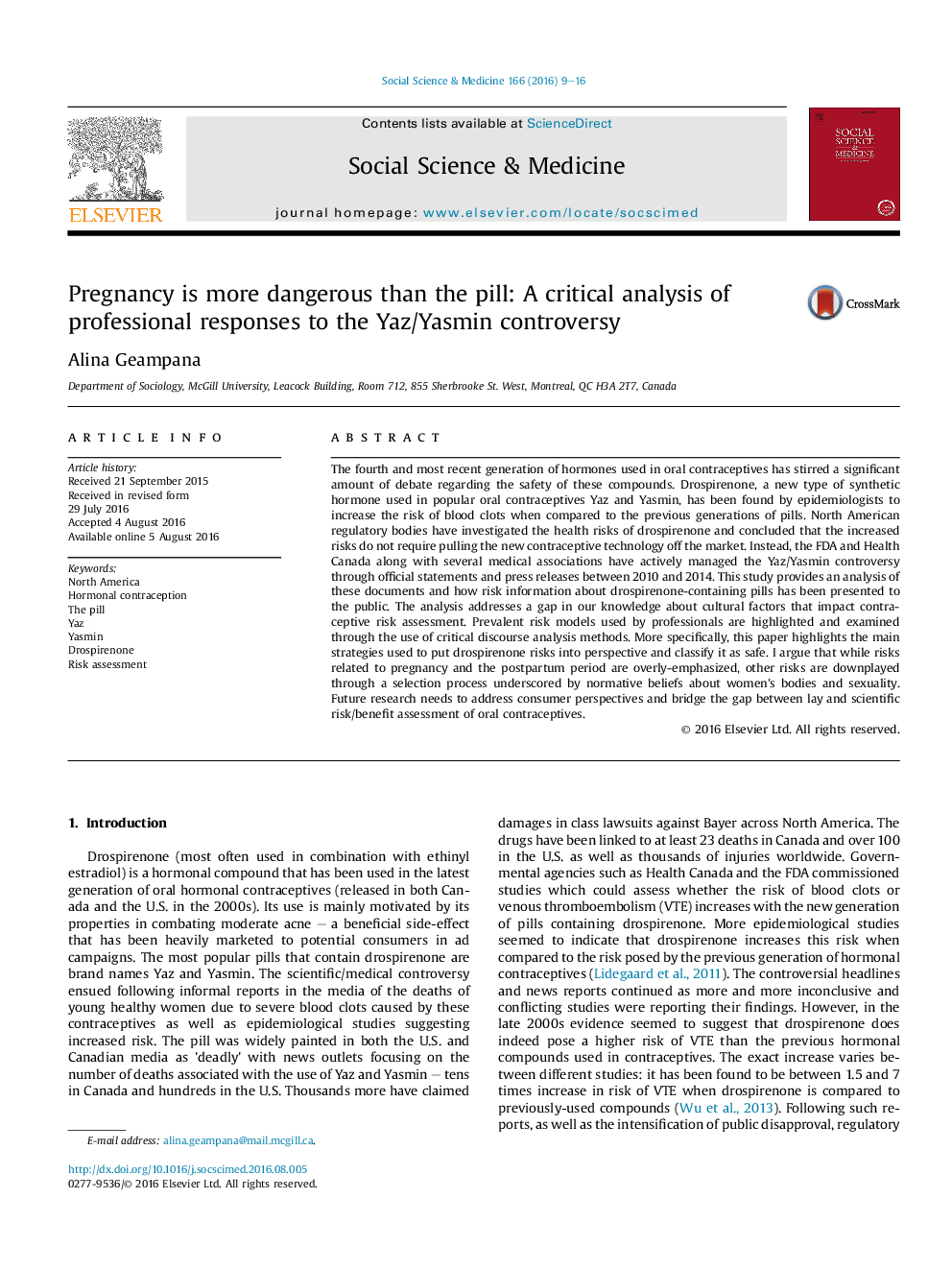| Article ID | Journal | Published Year | Pages | File Type |
|---|---|---|---|---|
| 7329120 | Social Science & Medicine | 2016 | 8 Pages |
Abstract
The fourth and most recent generation of hormones used in oral contraceptives has stirred a significant amount of debate regarding the safety of these compounds. Drospirenone, a new type of synthetic hormone used in popular oral contraceptives Yaz and Yasmin, has been found by epidemiologists to increase the risk of blood clots when compared to the previous generations of pills. North American regulatory bodies have investigated the health risks of drospirenone and concluded that the increased risks do not require pulling the new contraceptive technology off the market. Instead, the FDA and Health Canada along with several medical associations have actively managed the Yaz/Yasmin controversy through official statements and press releases between 2010 and 2014. This study provides an analysis of these documents and how risk information about drospirenone-containing pills has been presented to the public. The analysis addresses a gap in our knowledge about cultural factors that impact contraceptive risk assessment. Prevalent risk models used by professionals are highlighted and examined through the use of critical discourse analysis methods. More specifically, this paper highlights the main strategies used to put drospirenone risks into perspective and classify it as safe. I argue that while risks related to pregnancy and the postpartum period are overly-emphasized, other risks are downplayed through a selection process underscored by normative beliefs about women's bodies and sexuality. Future research needs to address consumer perspectives and bridge the gap between lay and scientific risk/benefit assessment of oral contraceptives.
Related Topics
Health Sciences
Medicine and Dentistry
Public Health and Health Policy
Authors
Alina Geampana,
